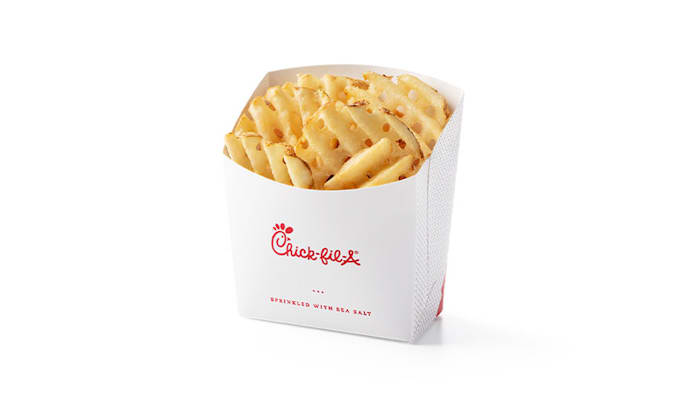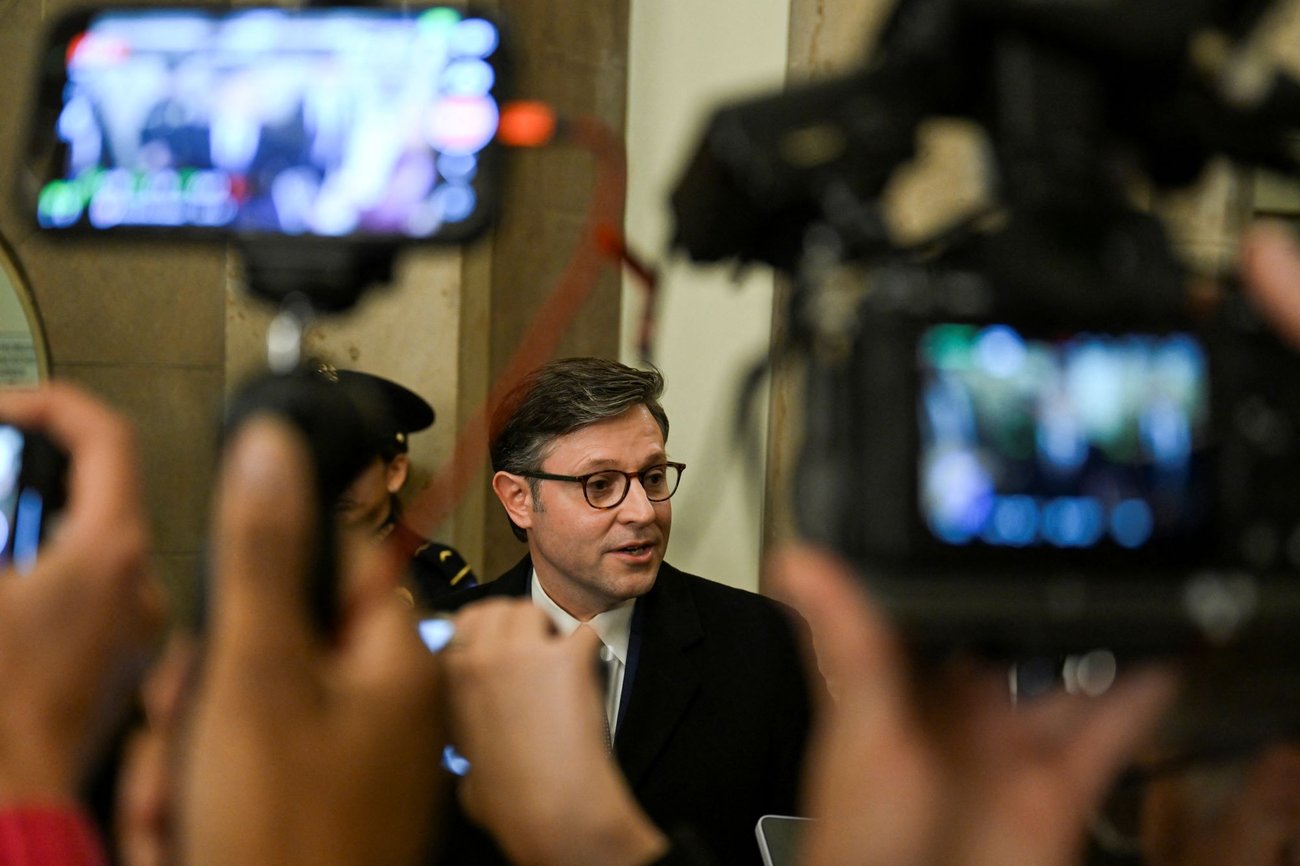
How to buy Detroit Lions 2024 NFC North Champions gear Yahoo Canada Sports
source

How to buy Detroit Lions 2024 NFC North Champions gear Yahoo Canada Sports
source

SpaceX on Monday launched 24 Starlink satellites into space.
The launch took place at Cape Canaveral Space Force Station, where a Falcon 9 rocket carried the satellites into space.
Watch NBC6 free wherever you are
The launch marks the company’s 17th flight for the first-stage booster, which also includes nine other Starlink missions, SpaceX said.
Following the first-stage separation, the booster will land on a drone ship that is stationed in the Atlantic Ocean.
Get local news you need to know to start your day with NBC 6’s News Headlines newsletter.
Falcon 9 delivers 24 @Starlink satellites to orbit from Florida pic.twitter.com/AWEHT61vS4

WEATHER ALERT
Brian Perry, Streaming & Creative Content, KPRC
Published:
Brian Perry, Streaming & Creative Content, KPRC
Attention all waffle fry aficionados! Chick-fil-A has made a change to its iconic Waffle Potato Fries, and the internet is crunching down on the details. According to Chick-fil-A, the new recipe delivers the same irresistible flavor fans know and love—only now, they stay crispier for longer.
Yes, you read that right. Crispier. Longer. As if we needed another reason to hoard those fries like they’re nuggets of golden treasure.
So, What’s New?
Chick-fil-A swears it hasn’t messed with perfection. The slight adjustment involves a new coating that features pea starch. That’s right—peas. This change reportedly gives the fries a longer-lasting crunch without sacrificing the taste that makes people consider dipping their fries into Chick-fil-A Sauce a personality trait.
But Wait—Are Peas an Allergen?
The good news is that this new coating does not contain any of the nine major allergens. However, if you have a rare sensitivity to peas (or just an irrational fear of vegetables), you might want to check the detailed nutrition and ingredient information on Chick-fil-A’s website or app before diving into a tray of these crispy wonders.
What About Taste Tests?
Reports from early fry samplers have been overwhelmingly positive. Some even claim the fries taste better now. Rest assured, Chick-fil-A says it remains committed to food safety and quality, so your fries should still pair perfectly with your favorite dipping sauce.
Naturally, social media has erupted with opinions. Some are praising the upgrade as a revolutionary leap for fry-kind. Others are reminiscing about the good old days (last week) before peas got involved. One thing is certain: the fries remain waffle-shaped, potato-packed, and dangerously snackable.
Whether you’re a die-hard Chick-fil-A fan, like myself, or a casual fry enthusiast, the updated Waffle Potato Fries are worth a try. Just be warned—they may stay crispier, but that doesn’t mean they’ll last long in your hands.
-Brian
Copyright 2025 by KPRC Click2Houston – All rights reserved.
Brian is a longtime member of the KPRC team, passionate about amplifying impactful stories and initiatives that matter to the Houston community. His work primarily focuses on the digital and streaming platforms of click2houston.com and KPRC 2+. Outside of his professional role, Brian is a strong advocate for pediatric cancer awareness and support.
Recommended Videos
TV Listings
Email Newsletters
RSS Feeds
Contests and Rules
Contact Us
Meet the Team
Careers at KPRC
Closed Captioning / Audio Description
Public File
Current EEO Report
Terms of Use
Privacy Policy
Do Not Sell My Info
FCC Applications
If you need help with the Public File, call (713) 778-4745.
At KPRC, we are committed to informing and delighting our audience. In our commitment to covering our communities with innovation and excellence, we incorporate Artificial Intelligence (AI) technologies to enhance our news gathering, reporting, and presentation processes. Read our article to see how we are using Artificial Intelligence.
Copyright © 2025 Click2Houston.com is managed by Graham Digital and published by Graham Media Group, a division of Graham Holdings.

Internet Archive fights to preserve digital libraries in Second Circuit hearing Courthouse News Service
source

Universe Today
Space and astronomy news
I’ve used this fact a gazillion times; every atom in your body has been through the core of a star! The carbon in our bones formed through fusion like many other elements and was thrown out into space to seed the cosmos with the elements for life. A team of researchers have been exploring this journey, tracking a giant conveyor belt that surrounds the Galaxy and the results are surprising.
Carbon is one of the fundamental elements inside our bodies. The first elements that appeared after the Universe formed 13.7 billion years ago was mostly hydrogen and a little helium. The carbon in our bodies has been synthesised inside stars in a process known as nucleosynthesis.
As stars evolve, they undergo a series of fusion reactions fusing hydrogen atoms into helium, then helium nuclei into carbon. Three helium-4 atoms combine to create an atom of carbon-12. Temperatures of around 100 million kelvin are needed for this process and, as it progresses, an outward pushing force known as the thermonuclear force is generated. During the main part of a stars life, this is balanced by the inward force of gravity.
At a point in the evolution of the star which is determined by its mass, the material that composes the star is ejected out into space through a planetary nebula or supernova explosion. Ultimately these heavier elements find their way to new stellar nurseries where the next generation of stars and even planets and life may form.
Scientists from the United States and Canada have shown in their latest research that the liberated carbon atoms don’t just drift aimlessly through space until they find their new home. Instead, their studies reveal that in galaxies like the Milky Way where star formation is still underway, the atoms take a less direct route. Giant currents known as the circumgalactic medium circle the galaxy and extend out into intergalactic space. The currents drag the newly ejected stellar material out and draw it back in to the interior of the galaxy where it forms new stars.
To reach this conclusion, the team used the Cosmic Origins Spectrograph on the Hubble Space Telescope. This instrument enabled the study of the ultraviolet radiation in detail from nine distant quasars. They explored how they were effected by circumgalactic medium of 11 other galaxies that had active star forming regions. The results showed the absorption of light by carbon. One galaxy showed carbon caught up in the current extending to a distance of nearly 400,000 light years. To put that into context that is around four times the diameter of our own Milky Way Galaxy!
It’s quite an eye opening discovery and certainly repaints the picture of stellar evolution. Instead of the gentle drifting through space of elements ejected from stars, the journey is far more tumultuous. As always though, more research is needed to fully understand the circumgalactic medium and to understand its impact on stellar formation. Not only will we get a better understanding of the lives of stars but how galaxies evolve too and why some host active star formation and others are stellar deserts.
Source : The carbon in our bodies probably left the galaxy and came back on cosmic ‘conveyer belt’
You must be logged in to post a comment.
This site uses Akismet to reduce spam. Learn how your comment data is processed.

House Speaker Mike Johnson sparked an unusual religion controversy last week when he recited a prayer in front of Congress after being reelected as speaker of the House.
The problem, at least according to some scholars, wasn’t that he prayed in the U.S. Capitol. It was that he claimed to be quoting former President Thomas Jefferson.
The prayer is “a reminder of what our third President and the primary author of the Declaration of Independence thought was so important that it should be a daily recitation,” Johnson said before he read his “prayer for the nation.”
He claimed that Jefferson prayed the words he was about to share every day of his presidency and every day after he left the White House until his death.
The prayer that Johnson read is a prayer of gratitude and a request for help. It asks God to guide leaders toward peace and to endow them with the spirit of wisdom.
“Save us from violence, discord and confusion, from pride and arrogance, and from every evil way,” the prayer reads, in part.
The prayer is familiar to Jefferson scholars, but many question whether it was actually written or recited by the former president.
The Jefferson Foundation calls out the prayer on its website, noting that, although it’s often associated with Jefferson, it’s unlikely he was the true source of the words.
“Ultimately, it seems unlikely that Jefferson would have composed or delivered a public prayer of this sort. He considered religion a private matter, and when asked to recommend a national day of fasting and prayer, replied, ‘I consider the government of the US. as interdicted by the constitution from intermedling with religious institutions, their doctrines, discipline, or exercises,’” the Foundation’s website says.
The website notes that the prayer seems to have first emerged in historical documents in the early 20th century, long after Jefferson died.
As the Jefferson Foundation’s website makes clear, Johnson, a Republican from Louisiana, is far from the first person to associate that prayer for the nation with Jefferson.
But he still faced pushback on social media and in news reports for repeating the challenged backstory.
“Dear Speaker Johnson, Please don’t make stuff up. The prayer that you read in the House Chamber today was not written by Thomas Jefferson and your claim that he recited it ‘every day’ is false,” wrote Rep. Jared Huffman, D-California, on X.
The House speaker did not respond to a request for comment from The Washington Post about lingering confusion over the source of the prayer.

Happy Monday! Today marks the fourth anniversary of one of the darkest days in American history, the January 6, 2021, attack on the Capitol that temporarily disrupted the certification of Joe Biden’s election as president. The scene inside and outside the House chamber was much different today. With Washington, D.C. under a heavy blanket of snow, Vice President Kamala Harris presided over a placid joint session of Congress to officially certify Donald Trump’s election to a second term in the White House. The process took just 30 minutes.
“The peaceful transfer of power is one of the most fundamental principles of American democracy,” Harris said in a video message posted to X before the certification. “As much as any other principle, it is what distinguishes our system of government from monarchy or tyranny.”
Trump posted that today would be a “big moment in history,” and before the certification he posted a picture from four years ago of the crowd of his supporters around the Washington Monument. An unnamed senior adviser told CNN that Trump’s mindset today was one of “pure vindication.”
Here’s what else is happening.
With President-elect Donald Trump set to take office in two weeks, Republican leaders are speeding ahead with plans to quickly enact their sweeping agenda. Just how they hope to accomplish it — whether in one massive bill or two separate ones — is still up in the air as Republican factions jockey for their preferred approach.
Speaker Mike Johnson told House Republicans at a planning retreat over the weekend that Trump wants to roll his border changes, energy policy and tax cuts into one huge package to be passed via the budget reconciliation process. Johnson said in a Fox News interview on Sunday that he envisions getting the package through the House by early April, or by Memorial Day at the latest, and that he wants the bill to also address the debt ceiling, which likely needs to be raised or suspended by sometime in June, if not sooner.
Trump endorsed the idea of “one powerful Bill” in a social media post on Sunday in which he said that tariffs would help cover the costs. “Republicans must unite, and quickly deliver these Historic Victories for the American People,” he wrote. “Get smart, tough, and send the Bill to my desk to sign as soon as possible.”
The single-bill approach preferred by Johnson would represent a shift from a two-step strategy that Senate Majority Leader John Thune and other Republican leaders had been planning. That would involve passing a border and energy package first and leaving the tax cuts for a second reconciliation bill. The idea would be to secure a key win for the new administration within its first weeks while buying time for the House GOP to rebuild its majority after the departure of two members who are leaving to work for Trump.
On the other side, Rep. Jason Smith, the Republican chairman of the tax-writing House Ways and Means Committee, has pushed for one bill, arguing that, despite the challenges involved, it would be the best way to ensure that the 2017 tax cuts do not expire at the end of the year as currently scheduled. The border and energy elements of the plan could also help bridge intraparty divides on taxes and revenues, securing necessary votes that might otherwise be in question. Smith insisted Monday that Republicans had settled on the single-bill approach.
Yet Trump and Johnson both suggested Monday that they remain open to the two-bill idea.
“While I favor one bill, I also want to get everything passed. And you know, there are some people that don’t necessarily agree with it,” Trump told talk show host Hugh Hewitt Monday morning, according to Politico. Trump acknowledged that a single bill would take longer, though he reportedly said he could “live with” that and it would be “cleaner” that way.
Johnson similarly left the door ajar. “Some people like the one-bill strategy, some people like the two-bill strategy. We will work that out. I’m in dialogue this morning with Sen. Thune, and the two houses will get together and we’ll get it done,” he told reporters.
Whether they pursue one bill or two, Republicans may still face a host of challenges in pushing through their plans. Some elements of their agenda may not fit within the narrow rules governing the use of the reconciliation process, which is limited to changes in spending, revenues and the debt limit and can’t raise the deficit beyond the 10-year budget window.
Thune has also pledged to keep the Senate filibuster in place, and he has reportedly indicated that he would oppose any effort to overrule the Senate parliamentarian on what qualifies for inclusion under the reconciliation process.
President-elect Trump has vowed to impose a new slate of tariffs on imported goods as part of an effort to boost domestic production, raise federal revenues and punish competing nations, but the exact details of the plan are still unknown.
During the campaign, Trump said he envisioned across-the-board tariff increases of 10% to 20%, with higher rates on China and possibly Mexico and Canada, but The Washinton Post’s Jeff Stein reported Monday that Trump’s aides were considering a less comprehensive set of tariffs that focus on critical sectors such as defense and energy.
Trump quickly pushed back on the reporting. “The story in the Washington Post, quoting so-called anonymous sources, which don’t exist, incorrectly states that my tariff policy will be pared back. That is wrong,” the president-elect said on his social media platform. “It’s just another example of Fake News.”
Still, the incoming administration has yet to produce a proposal, and the Post report highlights some of the tensions Trump’s advisers are likely dealing with while working on the policy details. While Trump has expressed profound faith in the efficacy of tariffs — “The Tariffs, and Tariffs alone, created this vast wealth for our Country,” he said last week, referring to the 19th century. “Tariffs will pay off our debt and, MAKE AMERICA WEALTHY AGAIN!” — some economists have warned that tariffs could be counterproductive, raising prices on all kinds of goods for American consumers while risking a reignition of inflation.
An unnamed Trump adviser quoted by the Post highlighted the tensions in play. “The sector-based universal tariff is a little bit easier for everybody to stomach out the gate,” the adviser said. “The thought is if you’re going to do universal tariffs, why not at least start with these targeted measures? And it would still give CEOs a massive incentive to start making their products here.”
The bottom line: Trump is sticking to his guns on an across-the-board tariff increase, but it’s too soon to tell if his stance is more a matter of pre-negotiation rhetoric or an unshakable desire to ratchet import fees higher for every nation that sells goods in the U.S.
Nearly 1,600 people have faced criminal charges over their roles in the violence that occurred at the Capitol on January 6, 2021, as part of a coordinated effort to overturn the results of the 2020 election and keep then-President Donald Trump in power at the end of his first term. Of those facing charges, more than 650 have been sentenced to prison, with their sentences totaling about 1,300 years, The Washington Post’s Philip Bump notes Monday.
“It’s easy, four years later, to forget the scale of what occurred,” Bump writes. “It’s particularly easy for those seeking a reason to exonerate Trump or to minimize his actions. But the justice system offers us a reminder: Hundreds of people have been ordered to spend cumulative centuries behind bars for engaging in the day’s violence in service of Trump’s desire to retain power.”
Now that Trump has been reelected, some of those prison sentences will likely go unserved, at least in part. Trump has vowed to pardon January 6 defendants as soon as he takes office — “I’ll be looking at J6 early on, maybe the first nine minutes,” he recently told Time — though it’s unclear how widespread such pardons might be.
Meanwhile, the memory of the January 6 attack continues to soften, at least for some voters. In a poll taken soon after the violence occurred, 51% of Republicans said they “strongly disapprove” of what happened at the Capitol. As of last month, that judgment has moderated, with just 30% of Republicans now saying they strongly disapprove of the events that day.